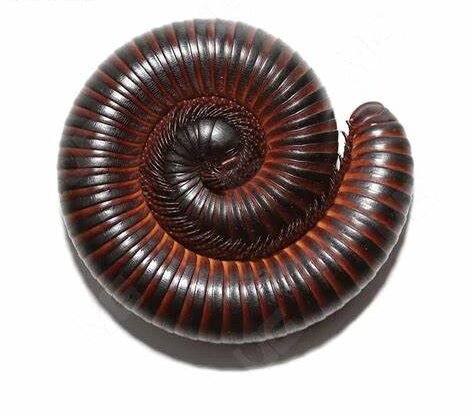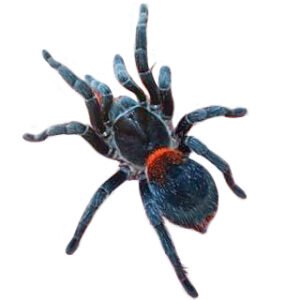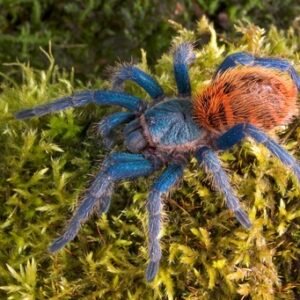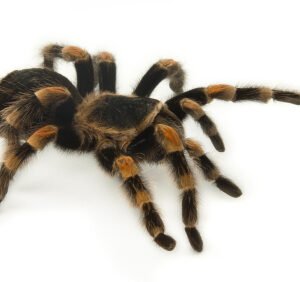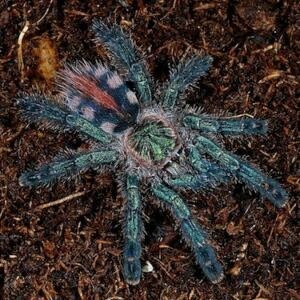Unveiling the Wonders of the Giant African Millipede
Introduction to the Giant African Millipede
The giant African millipede, scientifically known as , is one of the largest species of millipedes, captivating enthusiasts with its impressive size and unique features. This remarkable invertebrate can reach lengths of up to 12 inches (30 centimeters) and showcase a robust, cylindrical body composed of numerous segments, each adorned with two pairs of legs. The coloration of these creatures typically ranges from glossy black to brown, often marked with striking yellow or orange patterns that enhance their visibility in the dense foliage of their native habitats.
These millipedes belong to the class Diplopoda and are noted for their distinctive adaptations that help them thrive in diverse ecological niches. Found primarily in the rainforest regions of sub-Saharan Africa, the giant African millipede inhabits moist, decaying leaf litter, where it plays a crucial role in the ecosystem by aiding in the decomposition of organic material. This detritivorous diet not only contributes to soil health but also facilitates nutrient cycling within their environment.
The giant African millipede exhibits several evolutionary adaptations that distinguish it from other millipede species. Unlike the more common millipedes, which may secrete toxic substances as a defense mechanism, these giants rely on their size and a unique mechanism of rolling up in a tight coil to deter potential predators. Their natural camouflage and ability to blend in with the forest floor further enhance their survival strategies. With their impressive longevity, giant African millipedes can live for up to a decade, making them a fascinating subject of study for both researchers and hobbyists alike.
Behavior and Diet
The Giant African Millipede (Archispirostreptus gigas) is a fascinating creature, showcasing a range of intricate behaviors and dietary preferences that underline its role in the ecosystem. These millipedes are known for their slow and deliberate locomotion, moving gracefully across the forest floor. They utilize their many legs, which can number over 300, to navigate through leaf litter and soil, enabling them to search for food and shelter effectively. Their calm demeanor often leads them to display unique social interactions, where they may be seen coiling around each other or engaging in tandem locomotion during mating rituals.
In terms of defensive mechanisms, the Giant African Millipede employs a remarkable adaptation. When threatened, it can curl into a tight spiral, tucking its vulnerable legs beneath its hard exoskeleton to minimize exposure to predators. Additionally, it secretes a defensive fluid that can deter potential threats, although this substance can also be irritating to human skin. Such behaviors not only enhance the millipede’s chances of survival but also illustrate the complexity of its interactions with the environment.
When it comes to diet, Giant African Millipedes are primarily detritivores, which means they play a crucial role in breaking down decomposing plant material. Their diet consists largely of decayed leaves, rotting wood, and various organic matter found within their natural habitat. This consumption of decaying material aids in nutrient recycling within the ecosystem. In captivity, these millipedes may be offered a varied diet that includes fruits and vegetables, such as carrots, cucumber, and apple slices, to provide essential nutrients. Such dietary practices ensure that they maintain their health while also reflecting their natural eating habits. Understanding the behavior and diet of Giant African Millipedes is essential, as it highlights their ecological importance as decomposers and their influence on nutrient cycling in their environments.
Life Cycle and Reproduction
The life cycle of the giant African millipede (Archispirostreptus gigas) encompasses several distinct stages, commencing with the egg and culminating in the adult form. Adult millipedes typically engage in a unique mating ritual characterized by a courtship display involving intricate movement and pheromone release. When they mate, the male utilizes a specialized structure known as the gonopod to transfer sperm to the female. Following successful fertilization, the female lays clusters of eggs, often deposited in a damp substrate such as soil or decaying organic matter, which provides the necessary moisture for the eggs to thrive. Generally, a female can lay several dozen to over a hundred eggs at a time, ensuring a higher chance of survival for the young.
Once the eggs hatch, juvenile millipedes emerge, resembling smaller versions of adults but lacking the full complement of body segments. As they grow, they undergo a series of molts called ecdysis, where they shed their exoskeleton to accommodate their increasing size. This process not only allows them to grow but also plays a crucial role in maintaining their health and vitality. In optimal environmental conditions, a giant African millipede can mature into adulthood within approximately 6 to 12 months, depending on factors such as temperature, humidity, and food availability.
The lifespan of the giant African millipede can be quite impressive, often reaching up to 10 years or more in captivity, although they may live shorter lives in the wild due to predation and environmental stresses. Their ability to roll into a tight coil serves as a primary defense mechanism against predators, a behavior that is particularly beneficial during their vulnerable juvenile stage. By studying their life cycle and reproductive habits, we gain valuable insights into the resilience and adaptability of these remarkable arthropods, which contribute significantly to their ecosystems.
Keeping Giant African Millipedes as Pets
Keeping a Giant African Millipede as a pet can be a rewarding experience, but it requires a careful understanding of their habitat needs, care requirements, and overall health considerations. These intriguing invertebrates typically thrive in a warm, humid environment, which mimics their natural habitat in the wild. An ideal enclosure should be spacious, preferably a terrarium that allows for good ventilation. It is important to maintain a substrate composed of a mixture of soil, coconut fiber, and leaf litter, as it provides essential humidity and allows for natural burrowing behavior.
Feeding Giant African Millipedes is relatively simple, as they primarily consume decaying plant matter. Their diet can include a range of fruits and vegetables such as carrots, cucumbers, and lettuce, along with high-quality leaf litter and organic material. It is vital to provide fresh food daily, while also ensuring that you do not overcrowd the enclosure with uneaten food, as this can lead to mold and health issues. Additionally, providing a calcium supplement can help support their exoskeleton development.
Health considerations are paramount when caring for these creatures. Common signs of distress can include lethargy or a refusal to eat, which may indicate environmental issues or illness. It’s essential to regularly clean the enclosure and monitor humidity levels, making adjustments as necessary. Potential owners should also be aware of legal considerations, as regulations regarding the keeping of Giant African Millipedes vary by jurisdiction. Before acquiring these pets, consulting local laws is advisable to ensure compliance.
In conclusion, having a Giant African Millipede as a pet offers unique insights into the behavior and needs of these fascinating invertebrates. While they do present challenges in terms of care and legal aspects, the rewards of observing their intriguing activities and fostering an understanding of their biology significantly enrich the pet ownership experience.

